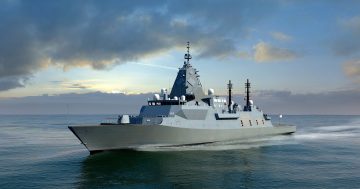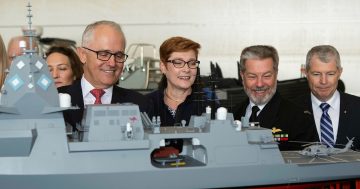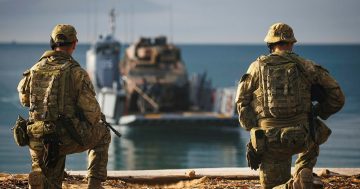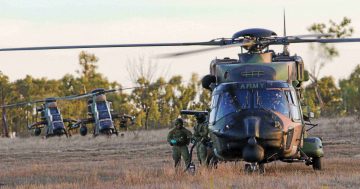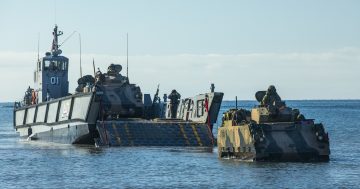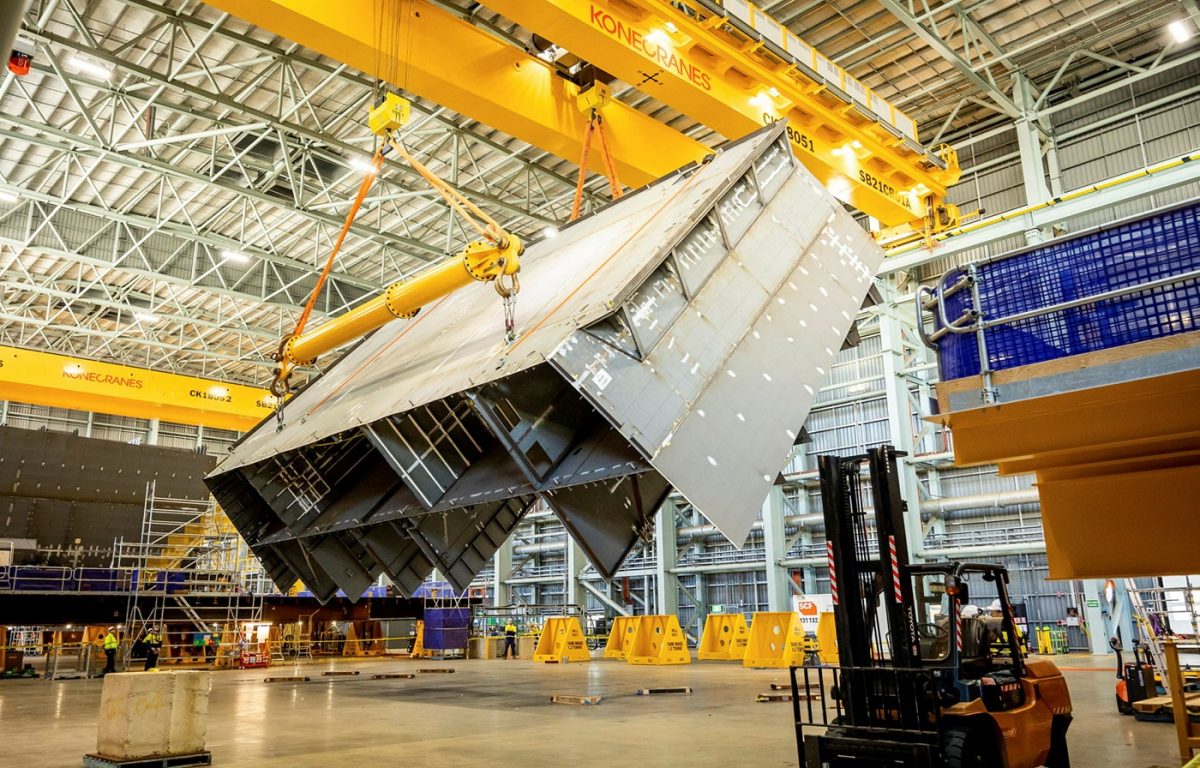
A prototype hull section for the SEA 5000 Phase 1 Hunter class frigate program. Photo: ADF.
The Department of Defence’s Annual Report on its 20 largest acquisition projects has been reviewed by the Australian National Audit Office (ANAO). It has been found to have been largely prepared in accordance with the guidelines.
It also found that nearly half of the 20 projects reviewed are experiencing some schedule risk.
The ANAO’s Major Projects Report (MPR) is prepared at the request of the Parliament based on criteria endorsed by the Joint Committee of Public Accounts and Audit (JCPAA).
This year’s report is the 16th iteration of the MPR, first conducted into the 2006-07 Defence Annual Report in 2007-08.
The JCPAA says the objective of the MPR is “to improve the accountability and transparency of Defence acquisitions for the benefit of Parliament and other stakeholders” and that it commissioned the MPR in the public interest.
The audit summary says the MPR informs parliamentary scrutiny and the national conversation on major Defence acquisitions and is intended to assist users by adopting a consistent reporting format over time and by including summary and longitudinal analysis prepared by the ANAO.
Of the 20 projects the MPR looked at, it found inconsistencies with just one project compared to the Annual Report’s Project Data Summary Sheets (PDSSs).
The PDSSs are designed to cover project background and government approvals, financial performance, schedule performance, delivery against agreed scope, risks and issues, lessons learned by the project and management accountability for the project.
The project concerned is the troubled Project LAND 200 Tranche 2 Battlefield Command System. It was found to be “materially inconsistent with evidence obtained during the review”, which it says “relate to the degree of confidence that materiel [equipment] capability will be met”.

At $16.4 billion, the AIR 6000 Phase2A/2B F-35A fighter project is currently the ADF’s most expensive approved project. The SEA 5000 Hunter class frigate and the eventual nuclear-powered submarines are expected to dwarf this figure financially. Photo: ADF.
The 20 Major Projects selected for review include six SEA projects, eight LAND projects, five AIR projects and one joint (JNT) project, with a total approved budget of approximately $58.6 billion.
Some of these projects include the AIR 6000 Phases 2A/2B acquisition of 58 Lockheed Martin F-35A Lightning II fighters for the RAAF; the SEA 5000 Phase 1 Hunter class frigate design and construction phase for the RAN; the LAND 400 Phase 2 Boxer Combat Reconnaissance Vehicle (CRV) for the Army; and the SEA 1180 Phase 1 Arafura class Offshore Patrol Vessel (OPV) for the RAN.
Because the audit covers the 2022-23 reporting period, the AIR 9000 Phases 2/4/6 MRH 90 helicopter program is also included in the list, despite being grounded and permanently withdrawn from service in September 2023.
Other projects include the LAND 121 Phase 3B Medium and Heavy Trucks, Modules and Trailers for the Army; the AIR 5349 Phase 6 Advanced (EA-18G) Growler electronic attack aircraft upgrade; the AIR 7000 Phase 1B MQ-4C Triton uncrewed maritime surveillance aircraft; the AIR 555 Phase 1 MC-55A Peregrine electronic ISR aircraft; and the Army’s LAND 907 Phase 2/LAND 8160 Phase 1 M1A2 Abrams and Combat Engineering Vehicles programs.
It found that nine of the 20 Major Projects experienced schedule slippage during 2022-23 and that nine projects reported that some capability/scope delivery elements were under threat or unlikely to be met.
Cost variances were also reported. Many of these can be attributed to project scope adjustments such as order numbers, additional equipment and upgrades, or foreign service project changes.
The most notable of these were a $629 million increase to $16.42 billion for AIR 6000 Phases 2A/2B, a $2.69 billion increase to $3.2 billion for AIR 5349 Phase 6, a $404 million increase to $2.4 billion for the AIR 7000 Phase 1B and a $219 million increase to $2.28 billion for Projects LAND 907 Phase 2 and LAND 8160 Phase 1.
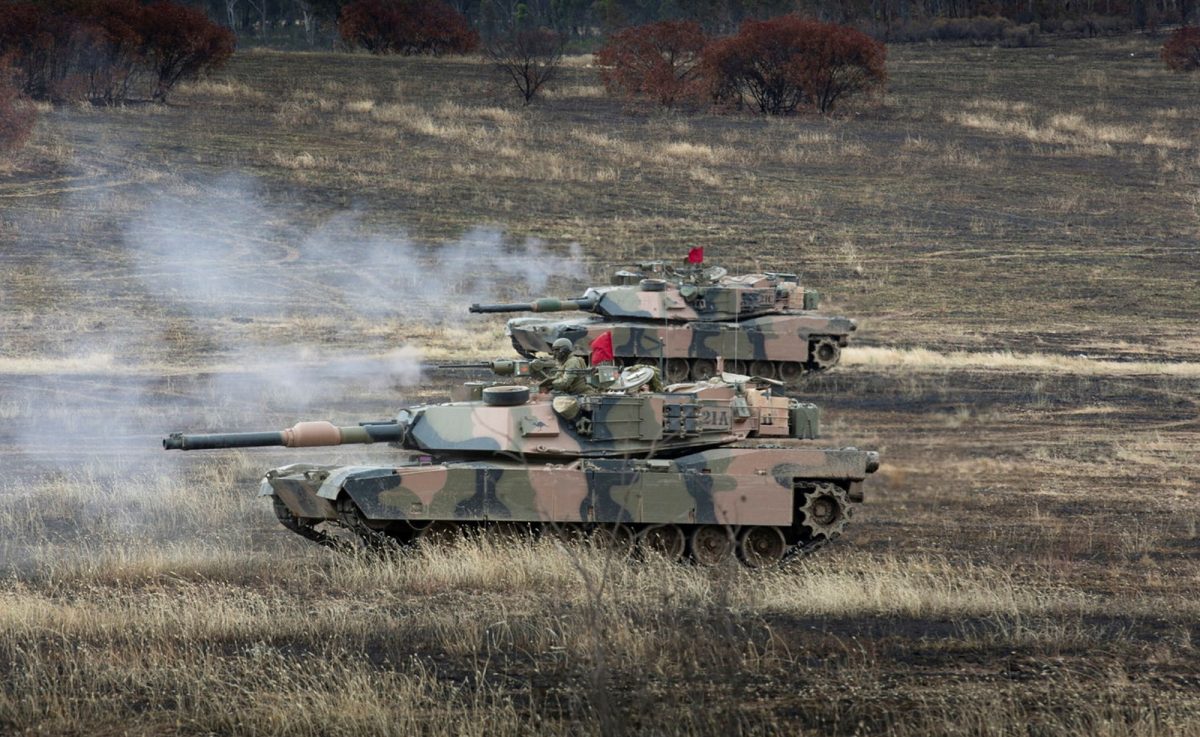
The LAND 907 Phase 2 Abrams tank upgrade and accompanying LAND 8160 Phase 1 Combat Engineering Vehicles program has seen a cost rise of $219 million in 2022-23. Photo: ADF.
While the schedule for AIR 6000 Phases 2A/2B hadn’t been affected in the 2022-23 Defence Annual Report, the delivery of the final nine F-35As on order for the RAAF has been delayed by several months from late-2023 due to ongoing project development delays for the TR3 and Block 4 hardware and software upgrades in the US.
The SEA 5000 Phase 1 Hunter class frigate program has also seen a schedule slip of about 18 months, with the construction of the first vessel now not scheduled to commence until June 2024. More details on the Hunter program are expected in the government’s Navy Surface Fleet Review, due to be handed down by the end of February. However, the report on 12 February indicates that many of the project’s issues have been addressed and that the project will proceed as planned.
Original Article published by Andrew McLaughlin on Riotact.


